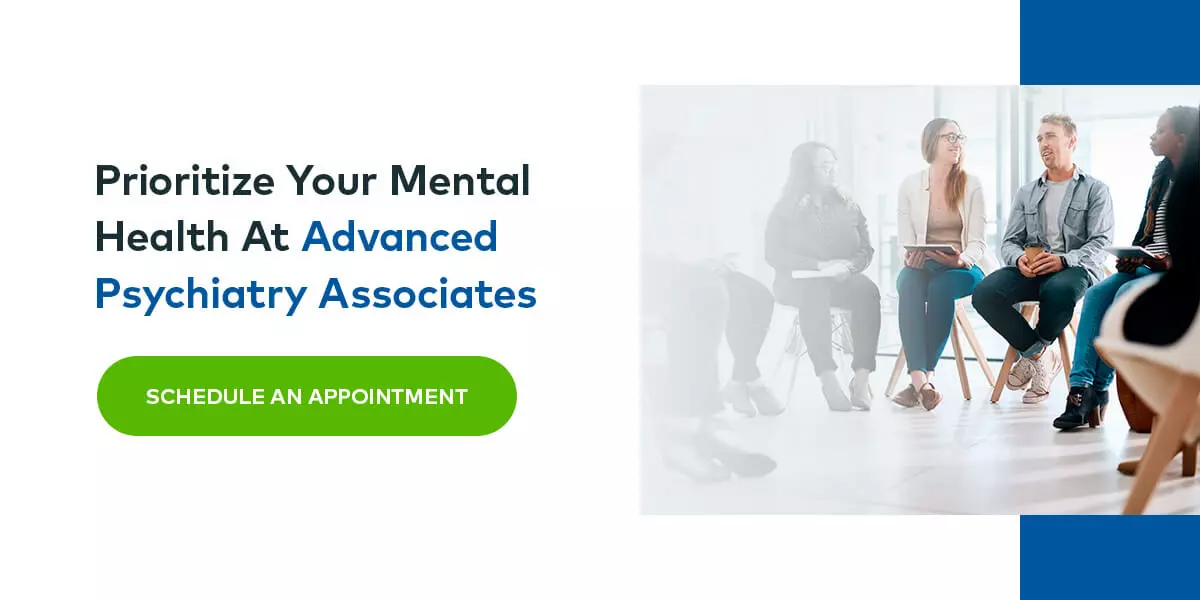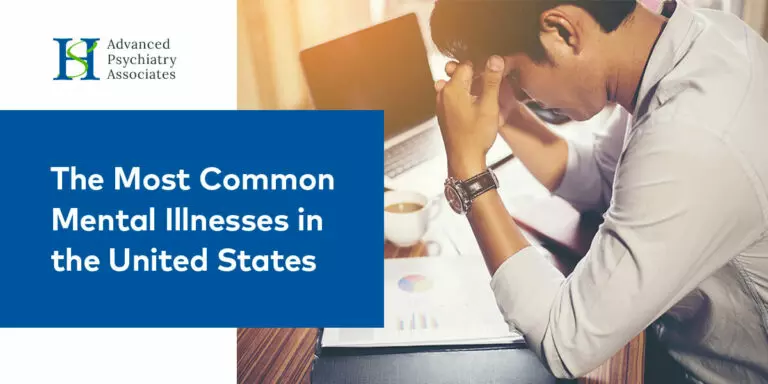Mental illness is a major concern in the United States. Millions of people struggle with different mental health disorders every day. Mental health concerns have only grown in the wake of the COVID-19 pandemic. From January to September 2020, the number of people seeking help for anxiety increased 93% compared to 2019 as a whole. With so much uncertainty in the world right now, an increase in anxiety may seem inevitable. However, understanding the issue is the first step to treating it. Learn more about this mental illness and some of the other most common mental health disorders below.
Anxiety
Anxiety is one of the most prevalent mental illnesses in the U.S., affecting 40 million adults in the country. This mental illness also impacts children — approximately 7.1% of children ages 3 to 17 have been diagnosed with anxiety. Anxiety is a broad term that can describe many anxiety disorders, including:
- Generalized anxiety disorder (GAD): GAD is characterized by excessive stress and worry experienced on most days. The symptoms of this common disorder may include racing thoughts, feelings of restlessness, difficulty concentrating, irritability, difficulty sleeping and muscle tension.
- Panic disorder: Women are more likely than men to experience panic disorder. The symptoms of panic disorder include heart palpitations, a racing heart, shaking, sweating and feeling out of control.
- Social anxiety disorder: While some anxiety related to social situations is normal, people who have social anxiety disorder struggle with near-constant fears of being judged by others and embarrassing themselves in front of others. This disorder may cause people to avoid social interaction.
- Separation anxiety disorder: Separation anxiety is often associated with children. It is commonly experienced by infants and toddlers, but separation anxiety disorder can affect children, teenagers and adults. This disorder can make it difficult to leave home and loved ones. People with this disorder may experience panic attacks related to fears of separation.
- Specific phobias: Phobias are intense fears related to specific things or situations. Arachnophobia (fear of spiders), acrophobia (fear of heights) and mysophobia (fear of germs) are some of the most common phobias.
Depression
Depression is another one of the most common psychiatric disorders in the U.S. Approximately 17.3 million adults in the United States suffer from major depressive disorder, while about 1.9 million children struggle with diagnosed depression. Like anxiety, depression is an umbrella term that includes multiple disorders, like:
- Major depressive disorder: Major depressive disorder is a mood disorder. People may experience a single episode of depression or multiple episodes. The symptoms of depression include feeling sad, lonely and hopeless and losing interest in once pleasurable activities. Depression can also cause physical symptoms, like lack of appetite, lack of energy and back pain.
- Persistent depressive disorder: Persistent depressive disorder, also referred to as dysthymia, is a chronic condition with several symptoms similar to major depressive disorder.
- Postpartum depression: Women's bodies undergo significant changes during and after pregnancy. Following the birth of a child, one in nine women develops postpartum depression.
- Seasonal depression: Seasonal depression, also referred to as seasonal affective disorder (SAD), affects people during the fall and winter months.
Bipolar Disorder
With about 5.7 million adults in the U.S. living with bipolar disorder, this condition is one of the top mental health disorders in the United States. The symptoms of bipolar disorder typically manifest in your 20s, but they can emerge later in life as well. This mental illness is also referred to as manic depression. Those with Bipolar disorder experience extreme changes in mood that cycle back and forth. When experiencing a manic period, someone with bipolar disorder may feel extremely confident and energized. They may also behave impulsively and recklessly. People with bipolar disorder can also experience depressive periods where they feel sad, hopeless and without energy. It is common to cycle between these two extreme moods with periods of stability in between.
Post-Traumatic Stress Disorder
Post-traumatic stress disorder (PTSD) is a prevalent mental health disorder in the U.S. PTSD is a disorder that can develop from trauma. Although this mental health issue is common among those who were in the military, anyone can get PTSD if they experience trauma. About 15 million adults have PTSD. People are typically diagnosed with PTSD if they continue experiencing symptoms of the disorder for longer than a month following the initial trauma, but symptoms can also emerge months or even years later. Side effects of PTSD include:
- Intense recollections of the traumatic event or events in the form of flashbacks or nightmares
- Difficulty concentrating and sleeping
- Agitation, restlessness and feeling jumpy
- Avoiding reminders of the trauma
Obsessive-Compulsive Disorder
Approximately 2.2 million adults in the U.S. have Obsessive-Compulsive Disorder (OCD). About a third of people diagnosed with OCD first experience symptoms during childhood. Obsessive cleanliness is often a symptom of OCD. This can certainly be a symptom of OCD, but this mental illness manifests differently in different people. People with OCD typically have obsessive thoughts and mental images that cause anxiety. It is entirely possible to recognize these obsessive thoughts as counterproductive but still struggle to control them. Typical obsessive thoughts include fear of losing belongings, fear of contamination, and intrusive thoughts of specific words and images. Compulsions can also be a symptom of OCD. Someone with OCD may feel compelled to act out repetitive behaviors to allay anxiety related to obsessive thoughts. This might mean someone with OCD has a specific set of behaviors around hand-washing or cleaning at home. They might also feel the need to arrange things in a certain way. 
Prioritize Your Mental Health
Despite growing awareness, having a conversation about mental health can still be difficult for many people. The biggest mental health issues in the U.S. affect millions of people. Experiencing a mental illness can be very isolating, but you are not alone — help is available. Medication, counseling, and cognitive behavioral therapy are powerful tools for treating mental illness. Treatment for each illness and each person will differ, but there is a way to move forward. At Advanced Psychiatry Associates, we provide a wide range of mental health services in our facility. Our expert team has years of experience, equipping them with the knowledge and compassion to help you determine the best treatment plan. If you are ready to prioritize your mental health, we are here to help. Schedule an appointment today.







